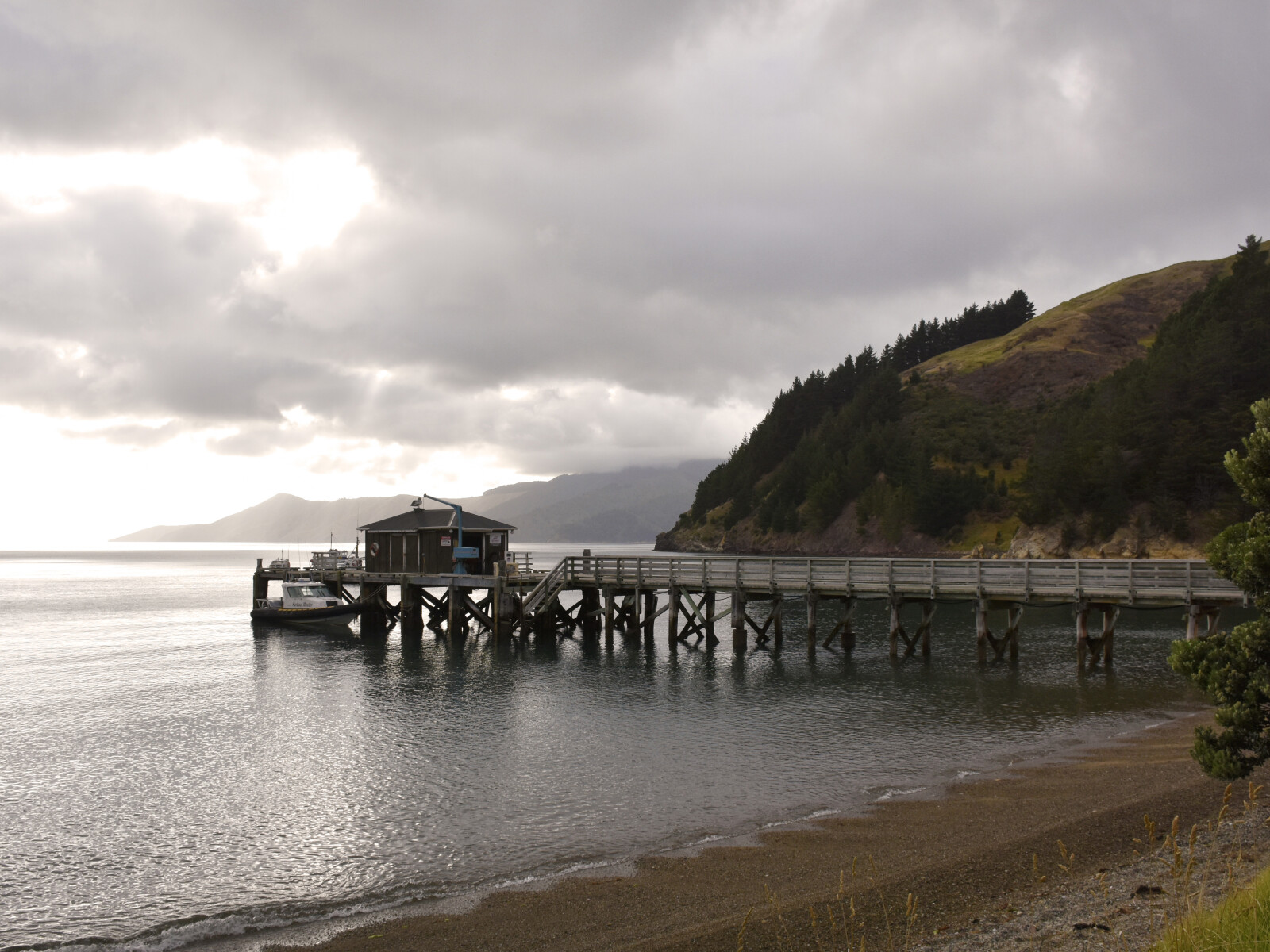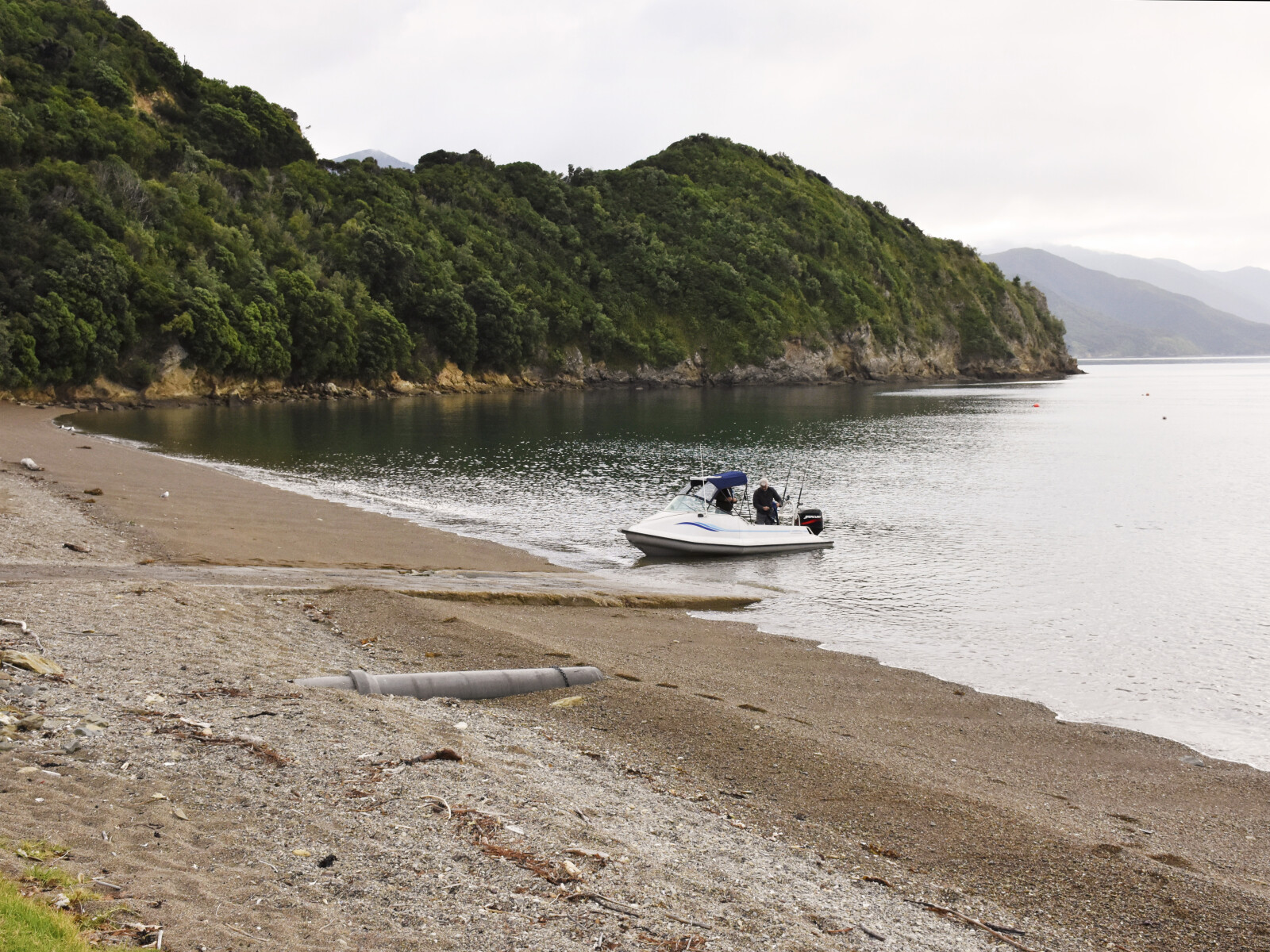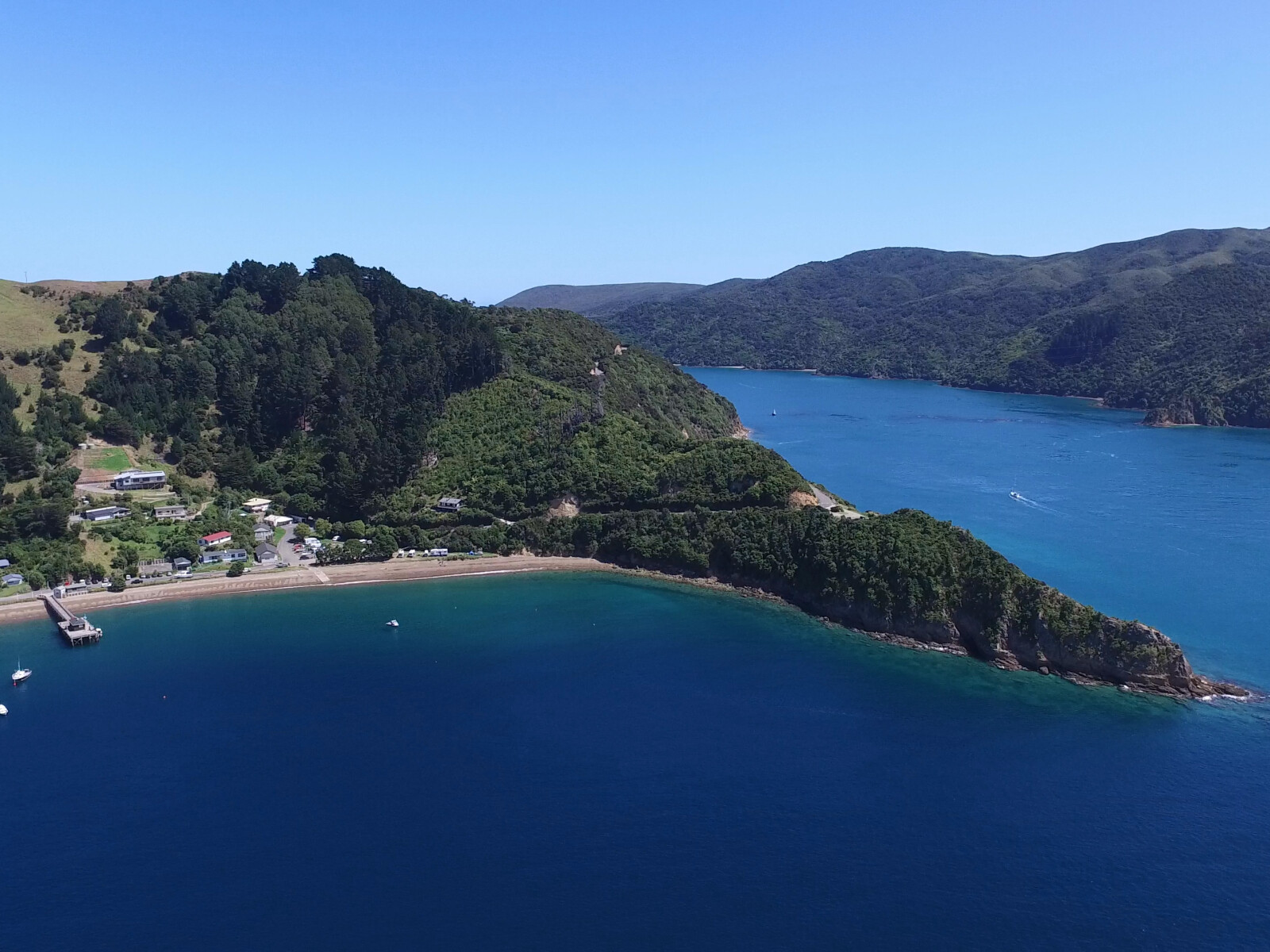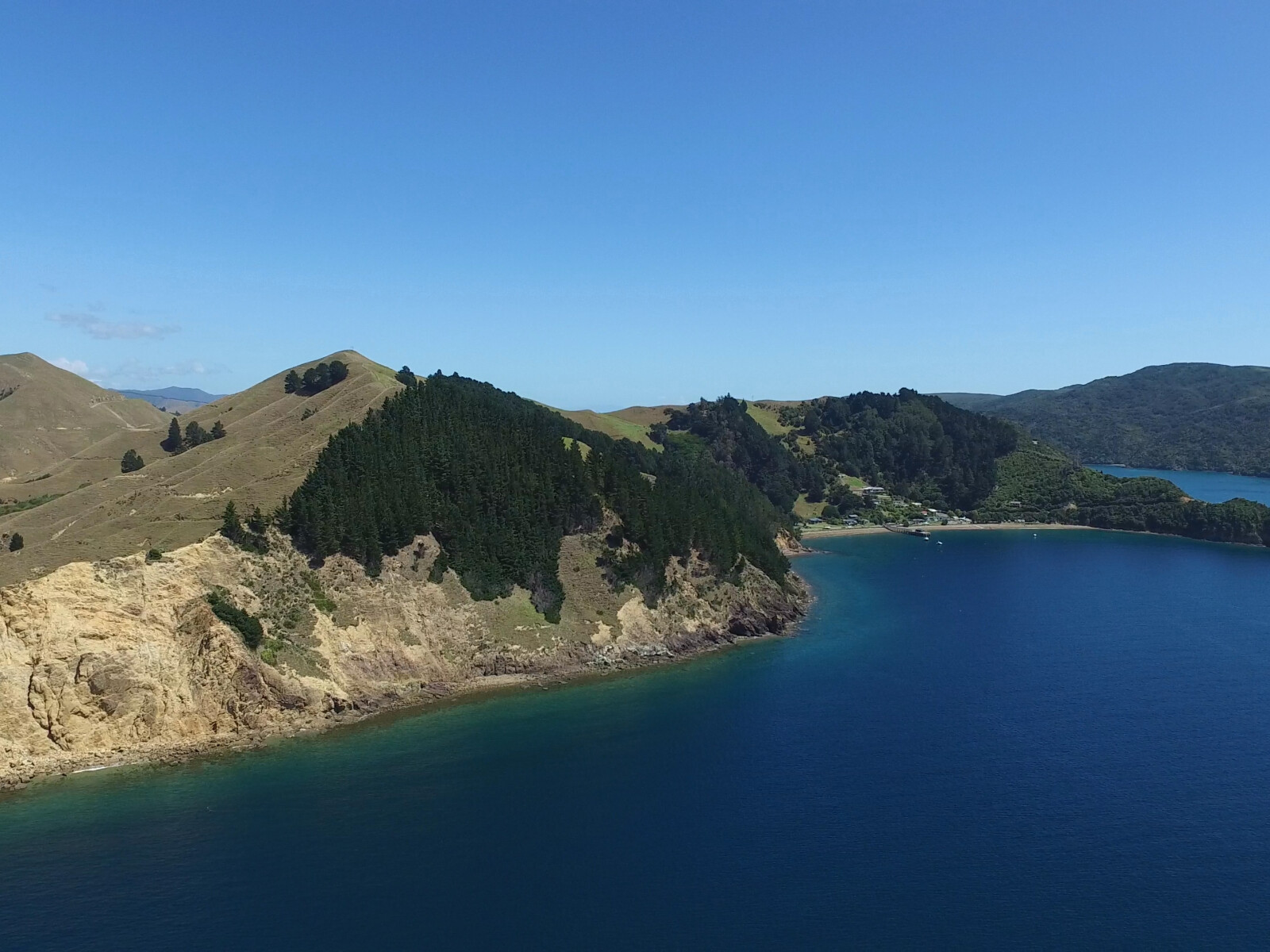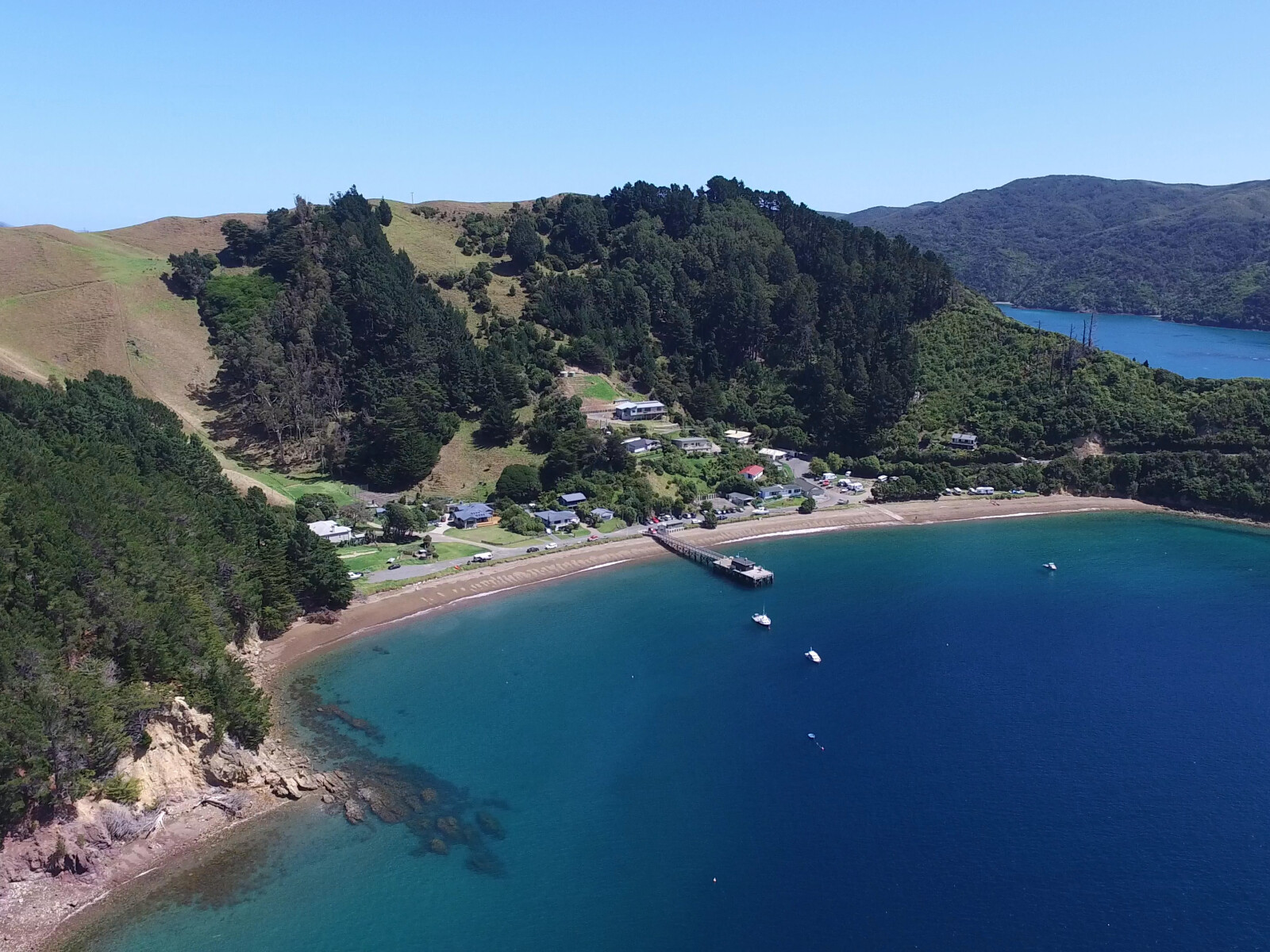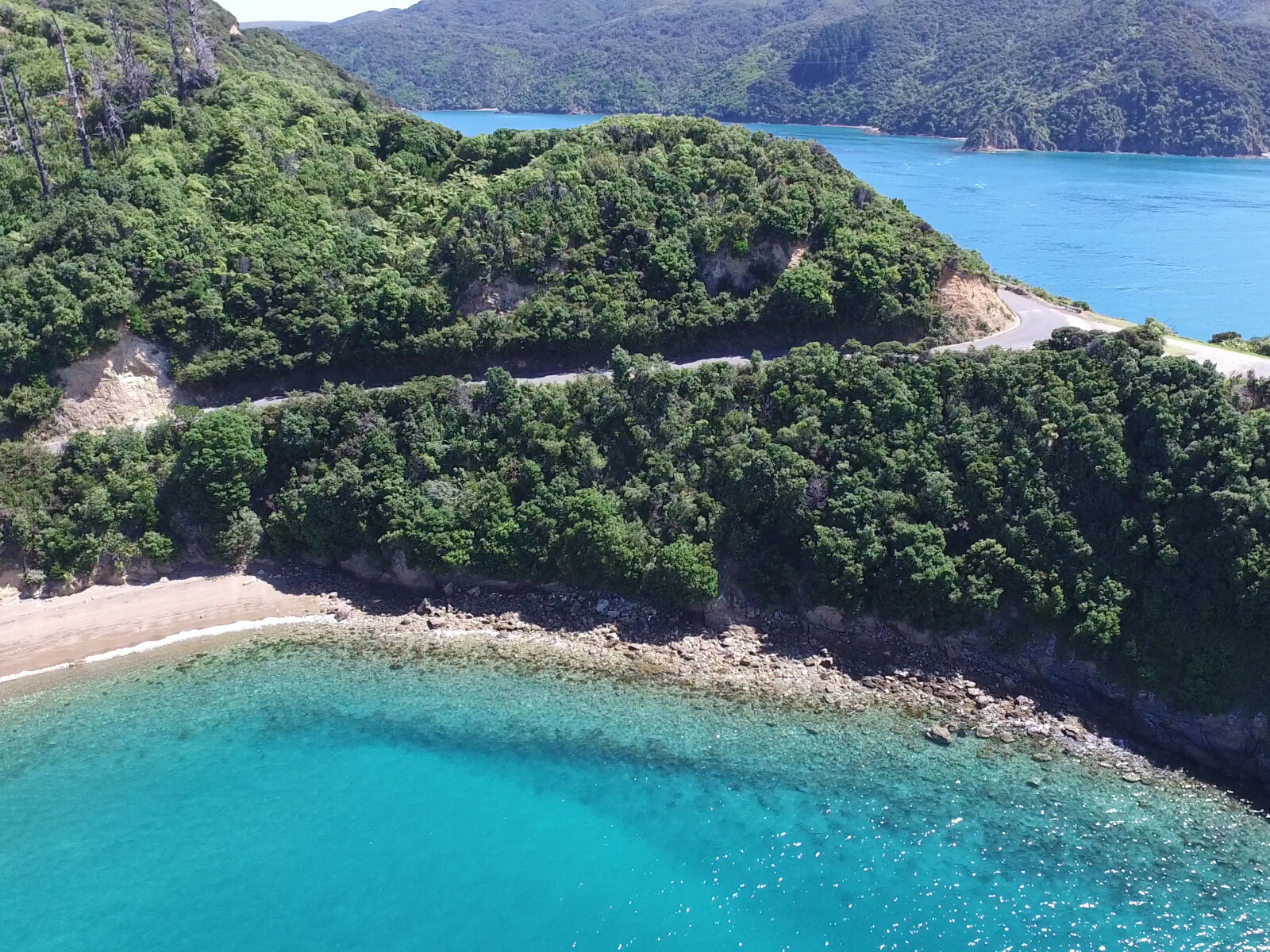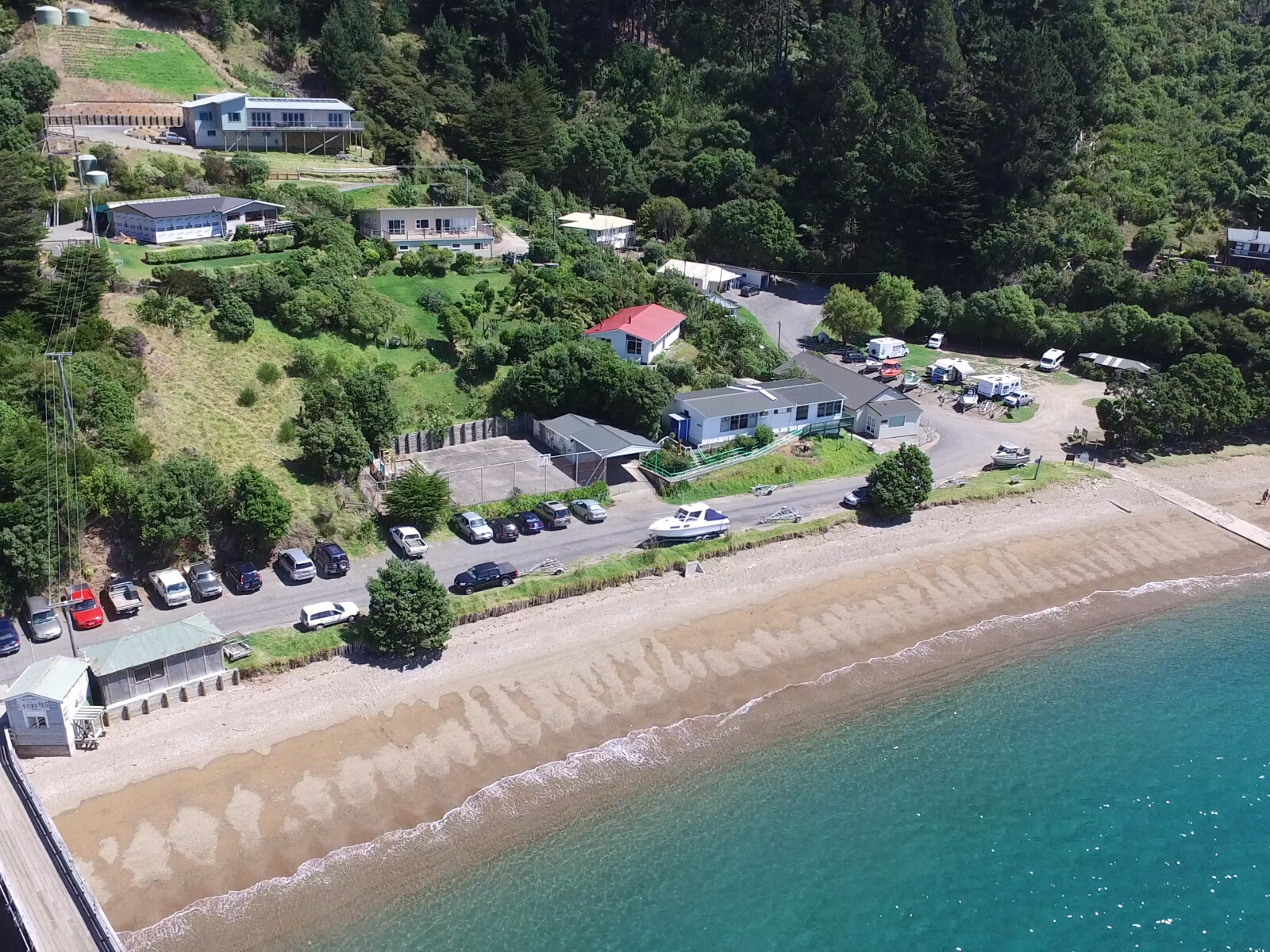Named after Arthur Cruickshank Elmslie, who settled permanently in the bay during the 1850s.
Elmslie was born in England but arrived in the Marlborough Sounds during the 1830s as a whaler. Several years later he took up residence in Te Awaiti Bay in the Tory Channel and married Erihapeti Pouakai of Ngāti Koata in 1833. The couple also lived at Anaho/Cannibal Cove in the Queen Charlotte Sound.
The marriage lasted until the early 1840s when Erihapeti remarried.
Arthur Elmslie applied for a Crown Grant for the land surrounding the bay known as Anaru. Here he farmed, traded and fished until his death in 1893.
Anaru is now the name of the settlement in the bay. It means rumbling cave.
The point to the north of the bay is known as Collinet Point. It was named in memory of Pierre Jean Francois Collinet who was boatswain upon the Astrolabe commanded by Admiral Jules Dumont d’Urville in 1827. The Astrolabe was a French Naval exploration ship and the first European vessel to navigate Te Aumiti / French Pass.1
Collinet Point was also referred to by locals as Pass Point. It was from this point to Clay Point on Cape Francis, at the northern edge of Admiralty Bay that from 1888 to 1913, Pelorus Jack, the famous Risso’s dolphin would greet and swim alongside ships heading to and from Nelson and Wellington via Te Aumiti / French Pass.
Pelorus Jack was protected by an Act of Parliament in 1904 and was last seen in 1913 when it is believed to have died of natural causes.2
1. Olive Baldwin, Story of New Zealand’s French Pass and d’Urville Island (Plimmerton: Fields Publishing House, 1979) 78-80, 132-134.
2. Nelson Historical Society, “French Pass Post Office”, Journal of the Nelson and Marlborough Historical Societies, Volume 2, Issue 3, (1989), accessed June 12, 2018, http://nzetc.victoria.ac.nz/tm/scholarly/tei-NHSJ05_03-t1-body1-d7.html .

